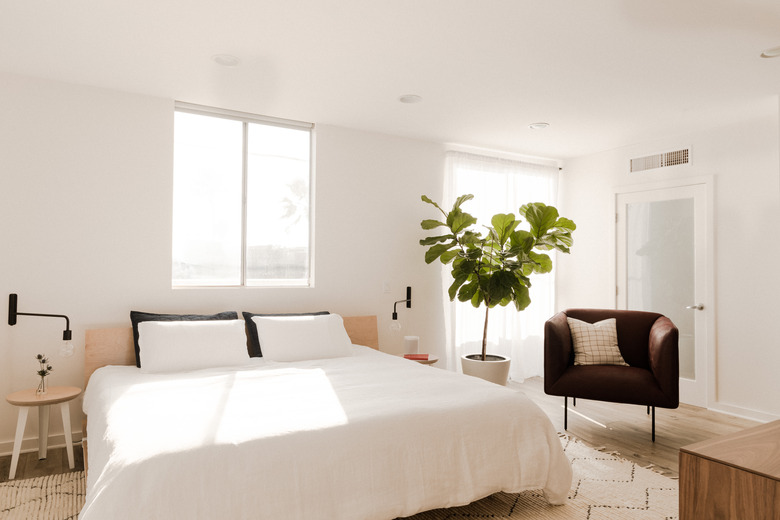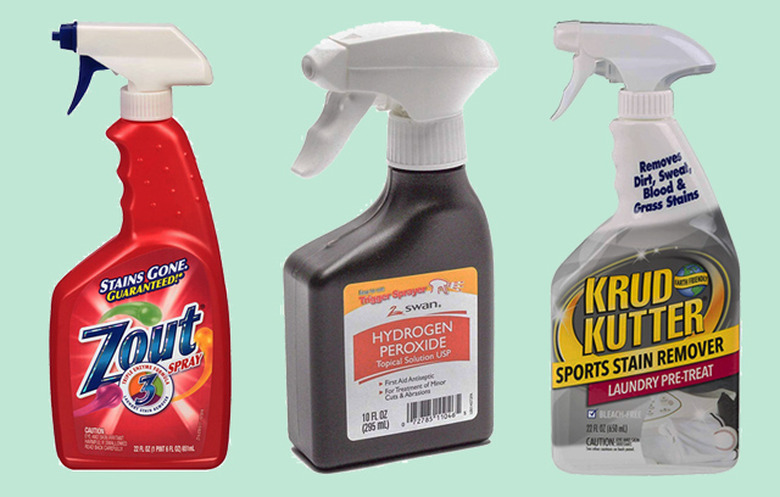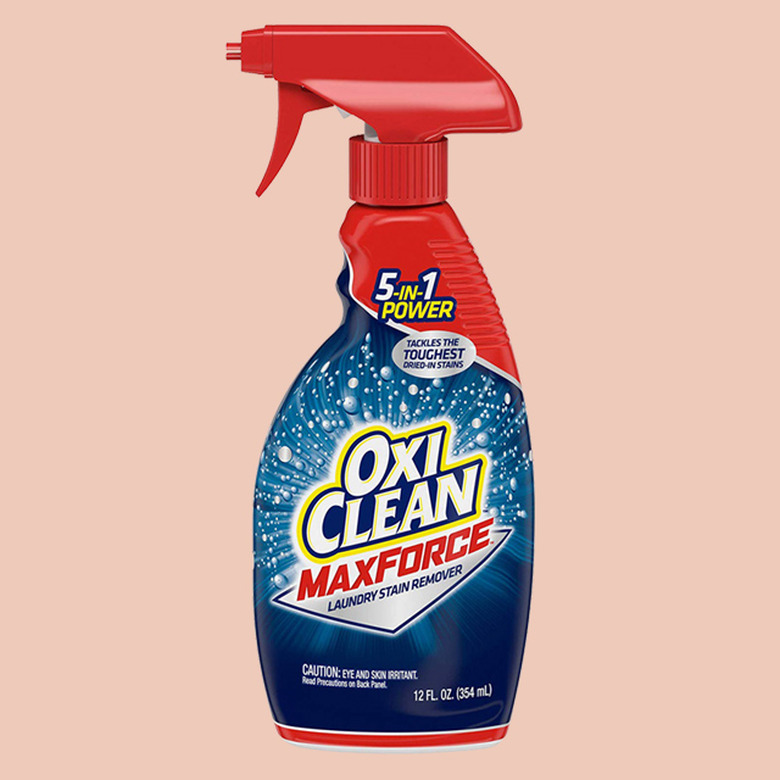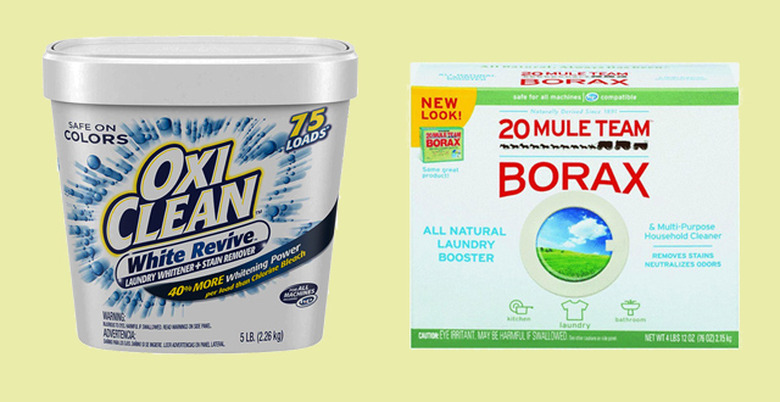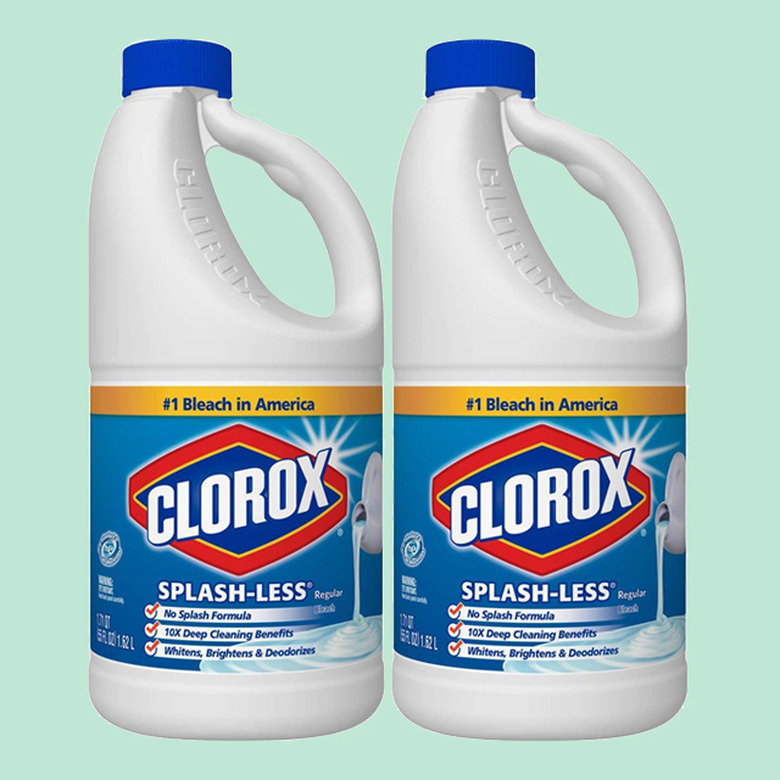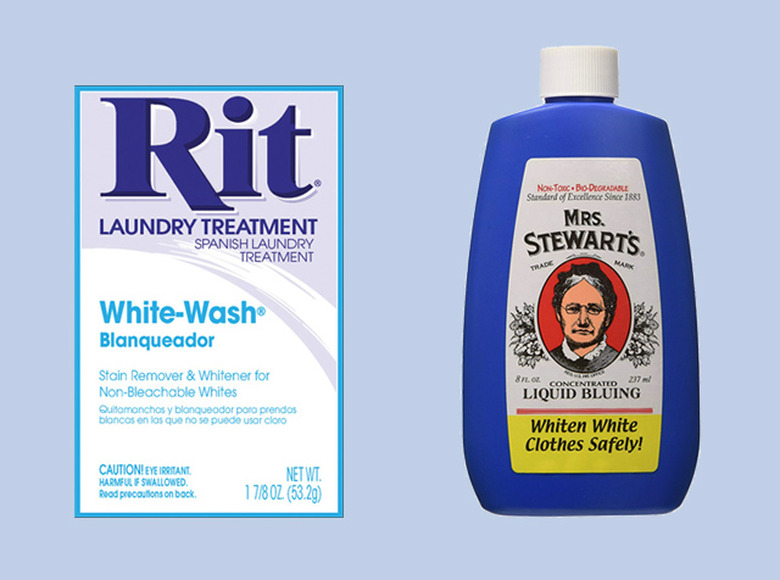12 Products That Will Keep Your White Sheets Looking White
We may receive a commission on purchases made from links.
So, you've decided to get all-white sheets and bed-covers. Welcome to the Society of White Bedding Appreciators! It's wonderful here, but we have some bylaws here in the Society:
- Regularly laundering your white sheets is crucial: Aim to wash the sheets once a week or every other week.
- Use good detergent and a whitening booster: In addition to a good stain-eliminating detergent like Tide Ultra Stain Release, use a whitening laundry booster like OxiClean White Revive or Borax in every load. However, avoid using chlorine bleach, as it has a chemical reaction to protein stains like sweat and sexual fluids that will make those stains appear more yellow.
- Don't sit on your bed in your outdoor clothes: Your outdoor clothes will transfer grime and dye onto bedding, leaving a dirty appearance over time.
- Handle stains ASAP: The longer stains linger, the harder they are to get out, so get in the habit of spot-treating stains as soon as possible, even if laundry day isn't a ways off.
- Take your makeup off every single night before bed: It's good for your skin AND for your sheets!
But also ... rules are (sometimes) meant to be broken! And when they are, or when life just happens, here are some tips for undoing any damage you may have done to your white bedding:
Blood Stains
Blood Stains
Blood stains will happen and we're all clear on why, so let's just move ahead to the part where we deal with them! There are LOTS of ways to remove blood stains, and the subject deserves its own column, but the three stain removers I turn to most often when I'm faced with a blood stain are hydrogen peroxide, Krud Kutter Sports Stain Remover or Zout.
Makeup Stains
Makeup Stains
Look, you and I both know that you NEVER go to bed without fully and properly removing your makeup — nope, not you! But let's say that a ghost enters your home and proceeds to lay her heavily made-up face on your pillows (she's a very glamorous ghost) leaving smudges of foundation, or mascara, or lipstick on the pillowcases, then what? Here's what: This OxiClean stain treatment. Spray some on the makeup, rub the stained fabric against itself, and look on in amazement as it disappears.
Overall Dinge
Overall Dinge
Eventually, no matter how closely you observe the bylaws of the White Bedding Society, your white sheets, blankets, duvet covers, etc., are bound to get a bit dingy. That's normal and you shouldn't feel at all bad when it happens to you — when we sleep, we naturally transfer sweat, body oil and dead skin onto our sheets which, over time, will leave a yellow or gray cast behind, even on sheets that are regularly laundered.
When that happens, there are a few deep-cleaning techniques I use on sheets. This is a very easy and hands-off process, but it does require some time. Here are three approaches you can take to reverse the dinge:
Method 1: The Long Soak
- Dissolve a scoop of either OxiClean or Borax in enough hot water to fully submerge the sheets. The bathtub or a large sink a great spots for this operation. If your washer allows you to fill it up and stop the cycle (i.e. most top-loaders), you can also do the soak right in there.
- Let the sheets soak for 8-12 hours, then drain the water and squeeze out as much excess liquid as possible.
- Launder the sheets as usual. The prolonged exposure to whitening products will help to reverse any dinginess the sheets have taken on.
Method 2: The Double Wash
- Wash the sheets once using regular detergent, which will remove body soils and other protein stains.
- Run them through the machine again with a cup of chlorine bleach like Clorox, but no detergent. The idea here is that the first wash removes the protein stains that bleach will react negatively to, leaving clean sheets that can then be safely whitened up with chlorine bleach.
Method 3: Specialty Whiteners
- Rit White-Wash is a single-use product you use right in the washer along with your regular detergent to restore whites to their original color.
- Bluing is my favorite of the bunch, so I saved it for last. Bluing is a sort of old-fashioned product, but it's great and I'm always excited to introduce it to a new audience. It does exactly what it sounds like it would: It turns things ever-so-slightly blue which, because of the way color perception works, counteracts yellowing and makes whites appear whiter. Usage instructions vary from brand to brand, so check and follow them for the specific kind you buy — the two biggest brands are Bluette and Mrs. Stewart's.
